And A Very Menopausal Christmas To You!

There are several other conditions whose onset tends to rise or peak at the same age and stage for women, and due to their shared features, they get missed & misdiagnosed, misattributed to that! (more…)

There are several other conditions whose onset tends to rise or peak at the same age and stage for women, and due to their shared features, they get missed & misdiagnosed, misattributed to that! (more…)
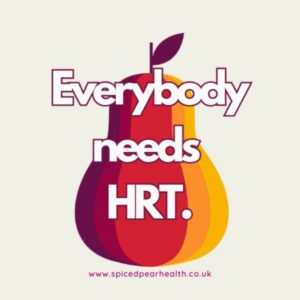

https://unsplash.com/@actionvance
Let’s play a word association game of minerals & their major roles
I say, ‘Potassium’. Maybe you say, ‘Sodium Potassium Pump’
I say, ‘Magnesium’. You say, ‘Muscles?’
I say, ‘Calcium’. You say, “Bones’….
But I say, Second Messenger. And arguably the most pervasive & potent one, at that. Remind you about second messengers? Well, sure. They are the ones who get sh*t done. Not like a boss (i.e. hormone or neurotransmitter) who shout directives from above but never step foot inside the dirty guts of the engine room itself. It’s the second messengers who run these messages from the outside of the cell to the inside and the engine room, to ensure that the directive is actually actioned! Amazing huh! And free calcium in the blood is, as I said, really a superhero even among the second messengers – with its regular responsibilities including: Insulin, TSH, Adrenaline, Oxytocin, Serotonin receptor activation etc etc
Does, it have a dark side? Well, sure. Don’t most superheroes?
If the available Calcium in blood and the extracellular environment is too high then basically bad sh*t gets done. Including vasoconstriction, clotting, deposition of calcium in the wrong place like arteries and joints and etc etc. That’s why the amount of Calcium in our blood is the MOST tightly regulated of all electrolytes and, in turn, has the NARROWEST of reference ranges. But will a Serum Calcium level always tell you when there is a problem with Calcium regulation? No. You’d need to have measured the major regulator itself, Parathyroid Hormone (PTH). Wait, am I seriously trying to tell you, that Serum Calcium alone can look completely normal in spite of really damaging Calcium dysregulation underway – leading to accelerated BMD loss, increased cardiovascular and renal risks etc.? I most certainly am.
So do you know which of your patients’ really need PTH assessment and why 1 dominant group amongst those, is any woman leading up to and following menopause?
No? Well you better pull up a pew and have a listen and a watch then! Yes this latest Update in Under 30 episode even comes with a little video tutorial!🤓🤯
Unmasking Hyperparathyroidism – Menopause & More
Parathyroid hormone is a career criminal. In addition to buoying dropping blood calcium levels via legitimate means, it illegitimately achieves this by stealing it from our bones. But you wouldn’t know it – because like all career criminals this occurs completely under the radar. Elevated PTH, however, constitutes the most modifiable risk factor for bone mineral density loss & fracture risk and offers the biggest BMD gains secondary to its normalisation. In addition to this, even within range but ‘high-normal’ PTH correlates with a range of other cardiovascular and urinary presentations & if combined with elevated serum calcium can become a multi-systemic presentation (GIT, Mental health etc) frequently mistaken for other aetiologies. So how can we be alert to this ‘bone thief’? Which of our patients will benefit the most from PTH measurement and monitoring? This recording, resource & video tutorial on how to use a Ca PTH Nomogram answers all!
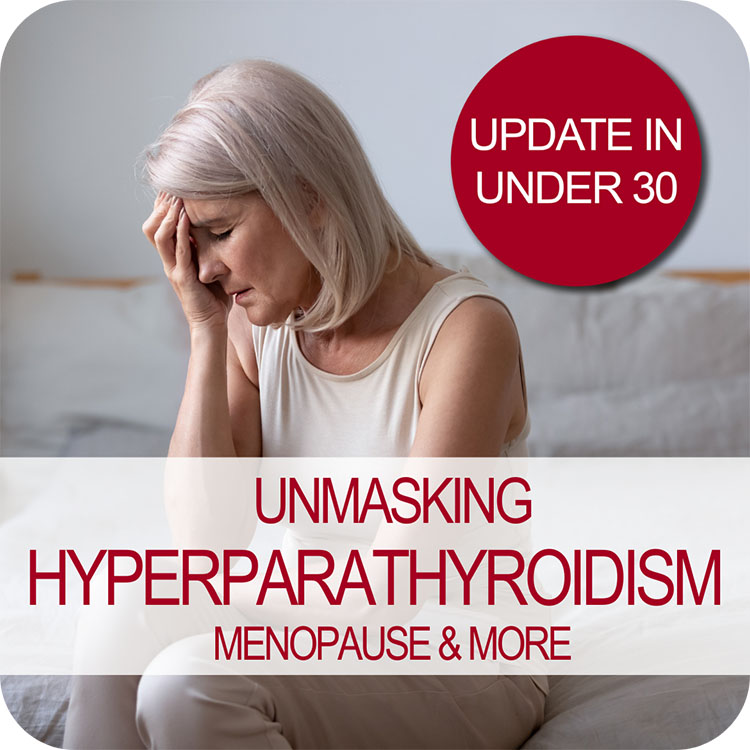
Ever feel like the universe has been preparing you just for this moment? Me neither really…but in this one weird way – yes!
So hear me out.
Thyroid disease as a result of a viral infection was first described in 1902 by Dr Fritz De Quervain and of course he and his ego called it De Quervain’s subacute thyroiditis. For some historical context, this predates the recognised role of iodine deficiency in thyroid disease! Skip ahead almost a century to deep in the 1990s and mini-me was sitting in a uni lecture room [front row & wearing fluro of course🤣] and over hundreds of hours (no scrap that zillions*^# of hours) of lecture content I was exposed to, the description of De Quervain’s Subacute Thyroiditis stood out and stayed stuck to me. I’ve brought it out for a twirl from time to time in the interim with some of my patients & in particular in correspondence with their docs. Skip ahead to the 2020s when we had this thing called. ‘a global pandemic’, and now everyone wants to talk viruses and their broader health implications & as a result, good ol’ Fritz, me and our buddy, De Quervain’s subacute thyroiditis, are all having a moment.
But just to recap – this is (clearly) not new.
What is new is the way this ‘virus of the moment’ has brought this Thyroid V Virus battle to the forefront. We are living an important chapter in history where all the textbook entries on De Quervain’s Subacute Thyroiditis are madly being rewritten to reflect the veracity of this viral attack on the gland and the wide-scale & varied damage that ensues over the months and years that follow. And so many of our patients are the walking embodiment of it – whether that be in the form of low or high thyroid hormones, nefarious changes to gland anatomy only evidenced on US. So what do we need to know? in short, that pathogens as goitrogens have never been more of an issue than right now for ourselves and our patients. And that compared with just our usual desire for comprehensive investigation of the HPT, taking a complete look ‘under the hood’, not only by way of a full TFT and Ab titres but also, wherever there is an additional suspicion – by way of a thyroid US – has become non-negotiable. But regardless of what you find there, once you look, do you know what to do next?
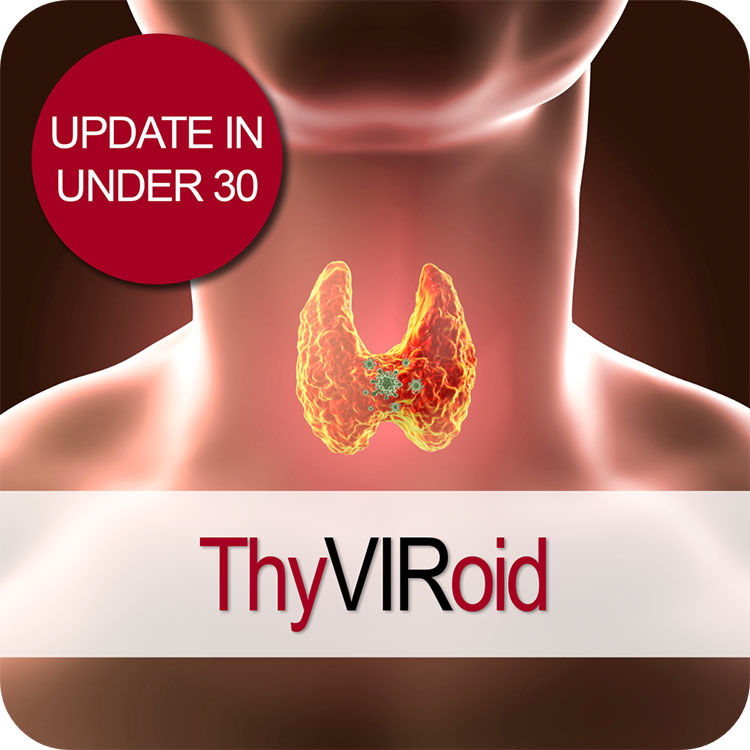 You can purchase ThyVIRoid here. If you are an Update in Under 30 Subscriber, you will find it waiting for you in your online account. You can become an Update in Under 30 Subscriber to access this episode and the entire library of Update in Under 30 audios and resources here.
You can purchase ThyVIRoid here. If you are an Update in Under 30 Subscriber, you will find it waiting for you in your online account. You can become an Update in Under 30 Subscriber to access this episode and the entire library of Update in Under 30 audios and resources here.
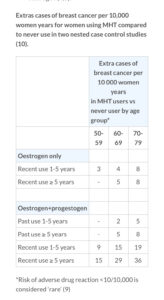
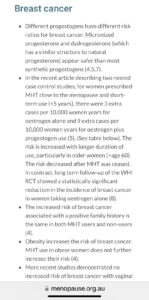
Update and Under 30 Podcast episodes are streamed monthly audios and resources to keep you up to date with the latest ‘must-knows’ in integrative medicine, covering a wide variety of topics from diagnostics to diet, all through the lens of an integrative health model. Every month each new episode will provide you with a quick scientific review with ‘clinic-ready’ practice tips, in under 30 minutes. In addition, the subscription gives you access to the ENTIRE back catalogue of UU30 audios that have been released…that’s over 120 episodes! You can become an Update in Under 30 Subscriber to access the entire library of Update in Under 30 audios and resources here.

And how do we, as integrative health professionals, continue to uphold our principles of prevention and treating the cause when excess adiposity may be a very real contributor? While ensuring we ‘see’ and treat each individual in front of us, not our assumptions about adiposity, not our body size bias nor blind spots?
One part of the answer: read and be led by their lab results – because pathology is nothing if not personalised. (more…)
The builder responsible for my reno arrived one day with a frown. When I asked him what was wrong – he said he’d just had his second high PSA result and now the doctor wants him to see a specialist. It was apparent that he felt this was a real cause for concern. Talk about raising a red flag to a bull 🚩🐂 Yes, of course you know what followed. I insisted on reviewing the results myself only to find the reference range provided on his report was not specific to his age – and if we adjusted up for this (as the science supports) his result is just 0.5 ng/mL above the expected value!
Now, remember he is a builder so, ‘0.5’ in his mind might well be on par with 5mm which apparently is a big deal…or so he keeps telling me every time I try asking for some weird unconventional thing for my roof, windows, walls, whatever!! So I still had to provide a little bit more detail for him to get perspective and to understand the true meaning (and lack of scary meaning) of his results.
This however is just a micro-illustration of a big problem in pathology – we all risk a lack of perspective but if we can get it back, aids us to see that seemingly ‘normal’ results are sometimes a concern, and so-called ‘concerning’ ones, non-significant. The incredible patient insights that can be gained from being able to measure & monitor actual quantities of things in our patients; nutrients to novel disease markers, precursors to end-products, all comes down to understanding how their values compare with…with what? With someone of a different sex and age? With ‘all adults 18-108!’? With any other pre-menopausal woman regardless of reproductive or cycle stage? With ‘the average’ adult given that this current definition is overweight & unwell? Who are we comparing ourselves and our patients to?
When I undertook my undergraduate training many moons ago – there was no education in blood test interpretation. But as soon as I got out into practice I found my patients had all these bits of paper filled with magic numbers that I felt certain might offer me insights and a deeper understanding of their whole health – and how to best help them.
I desperately wanted to decipher this foreign language and made it my mission to do so. I was lucky enough to meet and be paired with a kindred spirit, Dr Tini Gruner, who happened to be my supervisor when I returned to undertake my honours thesis. Together we pooled our knowledge, sought out & shared with each other yet more and found that, together with comprehensive case taking, it provided excellent scaffolding to our work-up of patient cases. Better than that, it created this baseline for patients, identified clear treatment objectives and we could measure the success of our interventions based on how their results did (or didn’t) respond to our interventions. It was (and still is) a totally thrilling way to practice.
We talk about there being both an art & science to medicine generally and certainly an integrative approach. Without the benefit of pathology interpretation, I felt too at sea at times, without quite enough of the science to check the accuracy of the ‘art’ and my speculation.
Being able to understand what each individual result represents and reflects, to know how to form meaningful comparisons – with external reference ranges that speak to healthy individuals of the same sex & life stage, derived from rigorous research – and also form a comparison with the patient themselves, to pick up on the most subtle and significant early alerts to an emerging pathophysiological or healing process – is the skill, I believe, we all need in health to complete the toolkit. That’s why I made it my mission to learn the language of labs, from a conventional & integrative interpretative perspective, and then to share this learning with everyone wanting and willing to take this baton from me (& Tini) and run with it 🏃♀️🏃
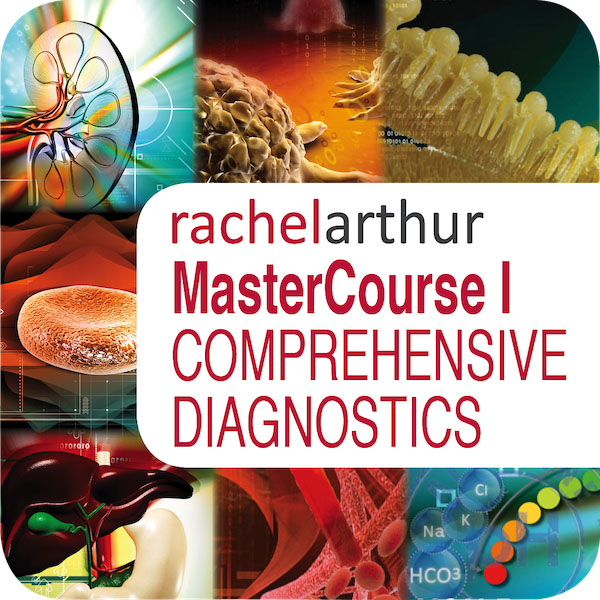
*Please note that this is the place to start for everyone wanting to add preventive diagnostics to their tool kit. It is also the pre-requisite for MasterCourse II, so make sure you have completed this before continuing with MasterCourse II: Thyroid and Adrenal Diagnostics.
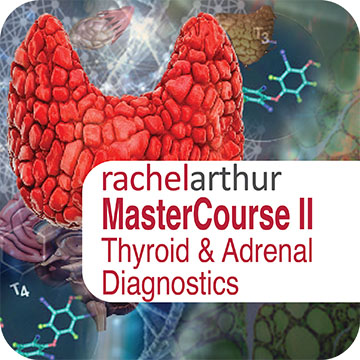
I can barely bring myself to write the word given how overused it has been of late 🤐🙄😯😕🙃 But I gotta say something! If we have found ourselves currently in a place where every second (or indeed single!) patient has a ‘histamine issue’ then I am afraid that it is we, that have an issue. (more…)
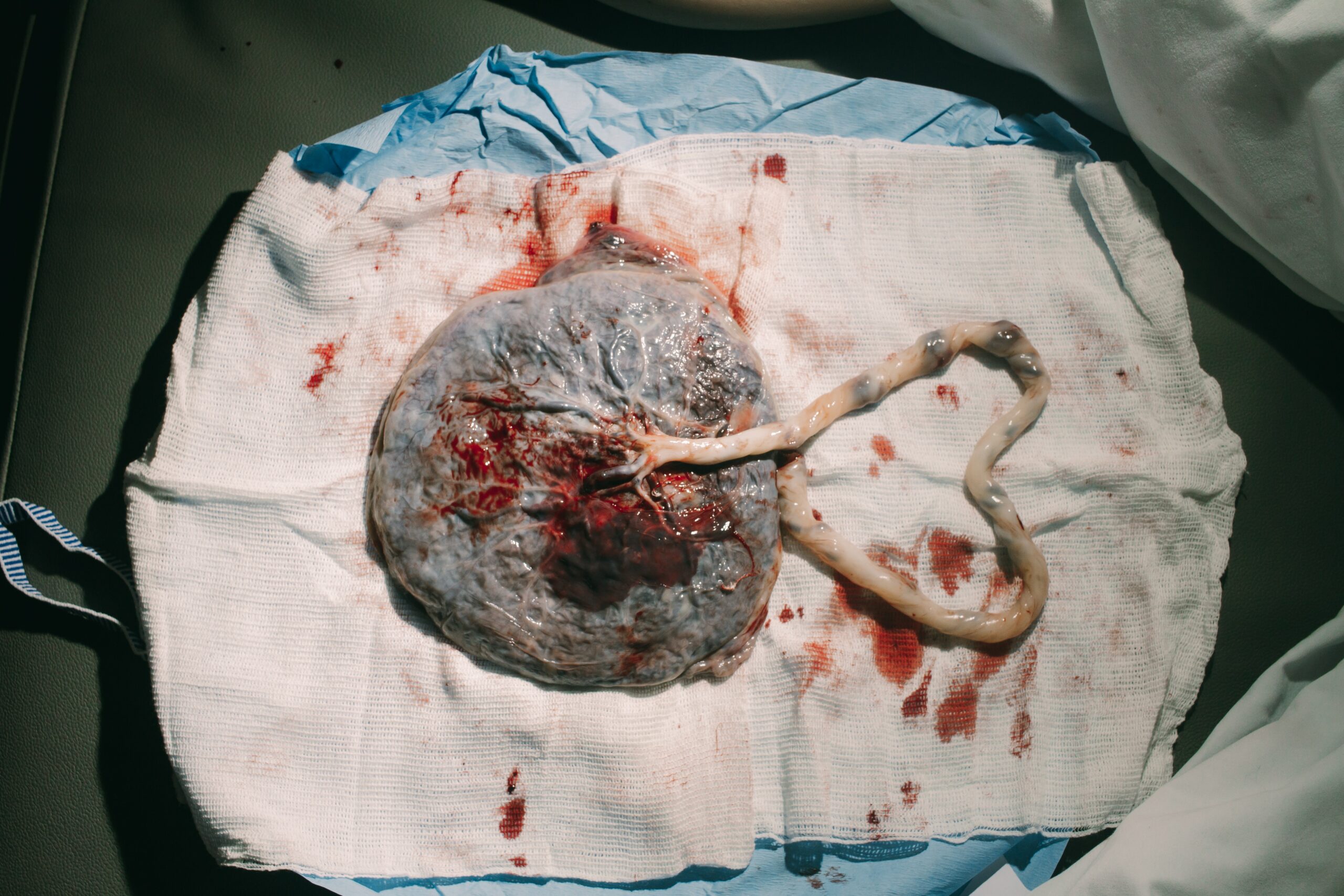

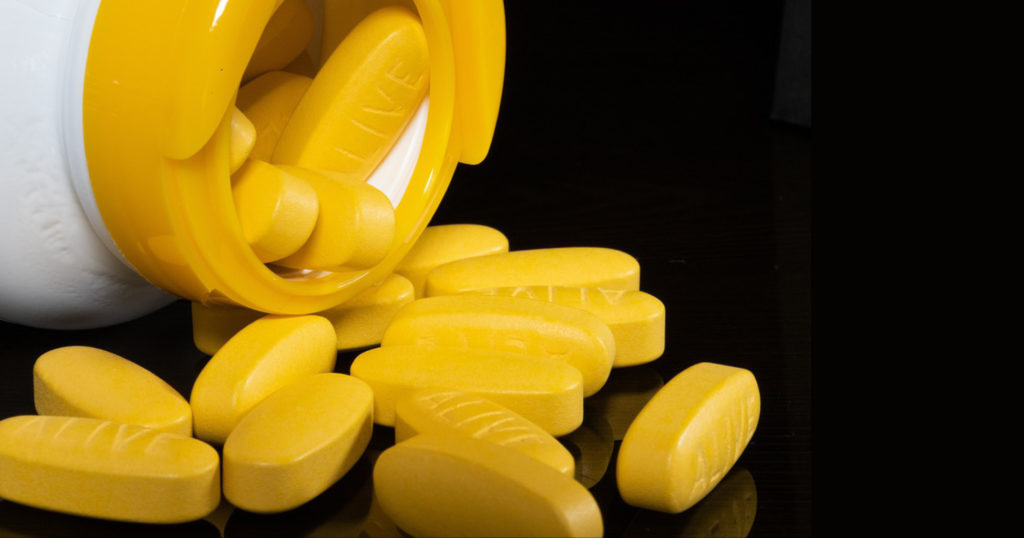
Gone are the days, thankfully, when we could all easily identify any individual taking an antipsychotic 1) because they were the marginalised ‘mad’ and 2) stigma and shame were rife. With the seismic shift that has occurred both in psychiatry & society we now know so many of the people we live or work with just might be taking ‘something’ & under any number of diagnostic labels. And increasingly the ‘anti-psychotics’ are not reserved for the psychotic nor the ‘mood stabilisers’ for the manic. Which can complicate things – especially when it comes to their thyroid.
The latest piece of evidence from a study of over 25K BPAD patients in the US tells us this common misunderstanding makes us prone to not recognise all the other patients in whom their psych meds are disrupting and in fact driving thyroid (dys)function. Though Lithium carbonate remains the most noxious goitrogen due to its multiple disruptive mechanisms – the rest of a large group of Psych meds (yes even antidepressants!) are impacting to the point of effecting the thyroid function test results you are likely to see in patients taking these. And this is something we need to be alert to – these medications are essential, non-negotiable in most scenarios, but a secondary hypothyroidism is not their intended goal and can make matters worse.
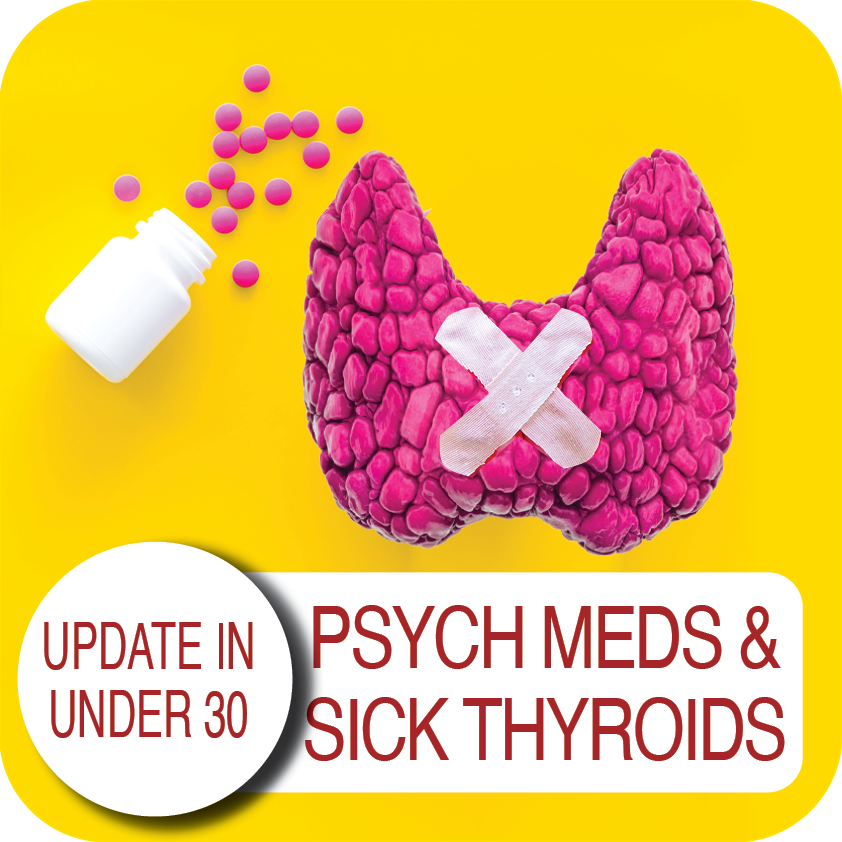
Have you been told somewhere by someone that the ‘perfect’ TSH is 1.5 mIU/L? This is a wonderful, terrible & wonderfully terrible example of ‘magical numbers medicine’. As a push-back against the published reference ranges we’re given, that are so wide you could drive a truck through them, there has been an over-correction by some, leading to the myth of ‘magic numbers’. We can narrow the reference range substantially for many parameters with good rationale, make no mistake about that but once we start setting ‘aspirational goals’ that are explicitly rigid…well we’ve done 2 things 1) forgotten about the patient to whom this result belongs and 2) disregarded viewing each result as part of a ‘pattern’, that we must piece together and make sense of.
Back to TSH then… if my obese patient had a value of 1.5 mIU/L this in fact would be woefully inadequate – so too a child at any weight.
And we expect a higher value as well in our elderly clients too and this level there may be, in fact, increased mortality.
But the same result would be excessively & worringly high in my patient who’s undergone thyroidectomy.
Realising the full value of any test result in terms of what it reveals about the person sitting in front of you, requires these more thinking and more thoughtfulness. Unfortunately, a list of ‘magic numbers’ will often lead you astray. And building your scientific knowledge about labs will not only help you avoid the pitfalls of pathology but will strengthen your pathophysiology prowess in surprising ways, saving your patients a packet in terms of additional extraneous testing and help you truly personalise your prescriptions…because the ‘invisible (biochemical individuality, oxidative stress, genetic probabilities, subclinical states, imbalanced or burdened processes etc) just became visible’. I started requesting lab results early in my career and years later was lucky enough to be taken under the wing of Dr. Tini Gruner. I found some of our shared notes, from 10 years ago, scribbled all over patient results recently and I was struck by just how lucky I was to have her encouragement to really pursue my interest and how she was a guiding force about learning to recognise pathology patterns over single parameters. A decade on I can concede, much of my clinical and educative success has come off the back of this foundational skill-set and I know, this is true for so many I’ve taught too.
“The guidance I’ve received over the years from Rachel in relation to pathology interpretation has been one of the most valuable (and fascinating) investments I’ve made as a clinician. Her teachings have filled gaps in my knowledge base I never knew needed filling and have significantly enhanced my understanding of the inner workings of the body! Rachel has an incredible ability to make the numbers that patient’s so often present us with, both understandable and clinically meaningful. The knowledge I’ve gained by investing in this skillset has paid off in dividends and I’m certain will continue to do so into the future.”
Stacey Curcio – Cultivating Wellness
I hope you’ll join me for the most exciting up-skilling opportunity in learning labs yet. Oh…and all this talk about thyroid testing..this next MasterCourse series is focused on revolutionising your understanding of thyroid, adrenal, HPT & HPA markers based on the very latest research & findings & marry these together with everything you learned in MasterCourse I (ELFTs, FBE, Lipids & Glucose) to understand the ‘whole story’.
…an absolute treasure trove of free integrative health information about your patient!
DEEP DIVE INTO REAL CASE STUDIES TO DEMONSTRATE EACH PATHOLOGY PATTERN IN ACTION. ]\
There are limited places. To sign up for Rachel’s LIVE Series – MasterCourse II: Thyroid & Adrenal Diagnostics
and for more information click here.
13 years ago I was first asked to contribute to ACNEM’s thyroid training
8 years ago I put together a little Masterclass on Diagnostics & 6 years ago co-created another one on Thyroid
2 years ago I dived deep into new literature to update my ideas & my teaching for ACNEM again & reinspired by all I had discovered
1 year ago I promised a new MasterCourse, for all those eagerly awaiting the next instalment: Thyroid & Adrenals
Now it is about to land!
Across this time I have fallen in and out of love with this topic. ‘In’, in the early heady days of learning some great tricks and tools, ratios and relationships between thyroid parameters (T4:T3, rT3:T3 etc) to aid interpretation but then ‘out’, when I discovered in my own patients and many others, that while this solved some thyroid patient puzzles, it left the curlier ones with questions remaining. I became unsatisfied with the simplistic stereotyping of the thyroid hormones (T3 important & always good, T4 not, rT3 never) and frustrated by the misapplication of ratios & lazy labelling of the thyroid as the ‘problem’. All of these things I intrinsically knew didn’t make good scientific sense and actually revealed a lack of depth in mine & our understanding. So I re-immersed myself in the very latest research and, wouldn’t you know it, in the time between there’s been a mini-revolution taking place in relation to our understanding of the HPT axis and the other endocrine circuits that manage it! Thank goodness for science!!
As a result, not a slide, possibly barely a dot-point remains from what I wrote back in 2009 and not a great deal more from 2015 even.
That’s how far the research has revolutionised my ideas & understanding.
Some of the assay techniques & technologies are new, there’s a river of research & a mountain of meta-analyses published in the time between & I have had the privilege of innumerable more clinical encounters in this space, to really nut out how all this translates into the real world. And most importantly I can confidently say that this training and teaching reflects the truly integrative nature of psychoneuroimmunoendocrinology…did I just make up a word?! Basically, if you think that the hypothalamus and/or pituitary is the boss of the thyroid – we need to talk! There’s a lot I need to catch you up on.
So like our first MasterCourse in Comprehensive Diagnostics earned us a reputation for, we are going to leave no stone unturned – no difficult question – unanswered, like…
So stay tuned… and watch this space! We thank you for your patience and know it will be worth the wait…
“Absolutely loved this course, I’ve listened to each of the recordings at least 3 times now taking furious notes and am still picking up new gems. Love that it’s helping me build up my knowledge and confidence in such a fundamental area of practice. The case studies are super valuable as they bring the labs to life, I’d be keen for more of these! Really appreciate all the extra PDFs / audios that have been added also. Eagerly awaiting MasterCourse II” – Naturopath | Australia
“Why wasn’t this content covered in medical school? As a psychiatrist, I have greatly benefited from attending this course which comprehensively covers the ins and outs of interpretation of pathology labs and how this applies to clinical cases – many of which have both physical and mental health considerations. I believe all doctors from general practitioners to specialists will gain from attending! ” – Psychiatrist | Australia
“Thank you so much for this course, it has been brilliant. It has ‘fuelled my practice’ and many people have benefited already – from such insights. It’s quite thrilling!!! I’ll definitely be signing up for the second course later next year” – Naturopath, Medical Herbalist | New Zealand
I’ve spent the best part of about 4 months recording my *NEW* Advanced Thyroid Assessment training. I told my team this would be easy and quick, given it was to be based on a great little 2-part, 2hr updated presentation I delivered just last year for ACNEM!! Sixteen weeks (like seriously…most of it) numerous rewrites and retakes later, our final product is 4 parts that goes for over 12hrs in total & has a bonus Adrenal recording! And yeah my team are impressed but unimpressed too if you know what I mean?!🙄🤪
Every time another, ‘Oh wow!’, or ‘No way!’, escaped my lips, it was a source of personal celebration, as another deeper layer of learning revealed itself.
But to the wonderful, somewhat weary and definitely wary Sally, who does all my powerpoints, it was met with, ‘Oh boy!’, because it meant many multiple new slides to build full of visual metaphors, animation acrobatics, if not an entire new Part!*#@^
Her sage advice along the infinite research road I’ve been travelling was : ‘Stop. You’re going to have to stop.’
So I did but now I am this meme. Everything I see currently through the lens of thyroid health, I talk in tongues TFTs and my brain is one giant neural network of integrative endocrinological circuits! I have fallen in love with this topic, this neuroendocrine axis and its ‘first responder’ role all over again! Hence our little thyroid character below – all ‘antennaed’ up – is one of the many tools we’ve developed for this training, to teach us that ‘bad thyroids’ per se are extremely rare – but bad scenarios are common (too much or too little of any macronutrient, key micronutrients, a change in the internal or external environment etc etc) and this little fellow and his board of directors (no – not the hypothalamus or pituitary!) – well it’s their job to ‘read the room’, right?!
In the absence of this key understanding we risk:
A lot of lazy labelling in thyroid health – ‘You have a bad thyroid – that’s why you…[can’t lose weight, feel tired, have SIBO etc]’
Misdirected treatment & especially a tendency to overload the butterfly with ‘thyroid’ nutrients – which can do more harm than good
I’ve said many times, ‘perfect number pathology is a myth’ but it runs rife in practitioners’ beliefs about TFT results with complete disregard of the person those labs belong too! Did you know, for example, that your TFTs should all be higher if your BMI is? That your T4:T3 ratio should never be 3:1 if you are on replacement, have hot nodules, are pregnant or are acutely unwell etc etc etc? How about how low your Selenium or Iron levels need to be before this factor will influence the actual levels of thyroid hormones measurable – & what the impact of these deficiencies are well before then that is far more sinister and serious? Yep…you see here I am, pouring just some of the tiny take-homes of Advanced Thyroid Assessment ALL over you!
Watch this space my new Thyroid training is just around the corner!
Are You Running Hot & Cold on Thyroid Nodules?
Ever been guilty of having a ‘man’s look’ for something? I have. Particularly when it comes to the online omniverse! I can be a bit flaky at finding things right there on the page…allegedly! So for those of you who have a similar experience with my website & endless educational offerings, I FEEL YOU! We do have a tonne of training options and a whole lot of (love 😉 couldn’t resist the Led Zepplin reference)… lab & diagnostics resources! This has come up in conversation a lot recently, following the release of our RAN Student Pathology Hub, for example: “I’ve done your MasterCourse in Diagnostics, does this cover something different?” or “LOVED😍 this new hub its *$@# incredible resources & extra training vids but I also wished it included your take on… [insert your pick from infinite list: thyroid, cortisol, zinc etc etc etc]
So here’s a Dummies Guide:
How to Find the Help you Need in Diagnostics
And for those of you primed praccies, patiently waiting for our MasterCourse II to land? Well about that…did we mention we got hit with a flood? Twice? And then got covid? Two of us? And have our beloved Nina about to depart to become a mumma!!! Yeah, so our plans to have this up and ready for May changed to Mayhem, real fast 🙄🤪 We will definitely keep you posted on any developments and new timeframes but for now we can only apologise for the delay and will do our best to get back on track with this, at the earliest opportunity. In the meantime maybe a little review of some of MasterCourse I is in order? I refer back and re-listen all the time, myself!!😂
Being a practitioner who is able to read labs will set you apart in practice. For your patients this flows from your ability to form a more sophisticated understanding of what’s happening for them, enabling you to better individualise treatment and deliver superior outcomes. Amongst other health professionals, it will attract positive regard and an increased willingness and enthusiasm for sharing the care of patients with you. Learning to be lab literate could take a lifetime…or you can enter the expressway from the very outset! We have curated the content to reflect the most essential elements, to help you hit the ground running in the shortest period of time. Spread across 12 modules which can be consumed as monthly instalments or, as an all-in-one experience for those wishing to waste no time. The teaching points, tips and tools make the complex simple, engaging, even fun!
I’m ready to zip my lips 🤐 and ride off into the sunset of silly season. But first I wanted to tell you about the BIG PLANS we have ON THE BOIL! Noticed a bit of a thyroid theme of late? Last month I presented training in thyroid assessment for the 4th time for ACNEM but not a slide, possibly barely a dot-point remained from the original one I wrote back in 2009. That’s how much my ideas & understanding have changed.
Some of the assay techniques & technologies are new, there’s a river of research & a mountain of meta-analyses published in the time between & I have had the privilege of yet more clinical encounters in this space, to really nut out how all this translates into the real world.
There’s a lot I need to catch you up on. And as I start creating our new MasterCourse II in Comprehensive Diagnostics…which will include 🥁…you guessed it…the humongously hardworking HPT, I’m just about bursting at the seams! And will those four little friends of every good practitioner, that sit superficially atop the ‘butterfly’, make it into our MCII?? I hope so because a) they should be our besties – being the director of Ca Mg D & P regulation and b) research tells us that where we find, ‘thyroid’ dx we should have another good hard look for ‘parathyroid’ dx and vide versa and c) over the last few years it has become increasingly apparent to me that this is one incredibly common source of ‘medical mysteries’ in our patients – remember the ‘Bones, Stones, Abdominal Groans & Psychic Moans’ catch-cry? Yep, that’s the patient who typically finds their way to us, with pervasive but hard to pinpoint gut issues (often misdiagnosed as SIBO, FGD, IBS -D or C), some significant stress perhaps even depression and insomnia and, if someone bothered to look, premature bone demineralisation. What other pathology panels and parameters will we be able to squeeze into our MasterCourse II?
Our current plans are to deliver the MCII live from May but just a reminder, because this next instalment assumes you have the exquisite foundational knowledge we laid down in the MCI – this is a pre-requisite for attending the MCII.
So if you’ve been putting off your pathology apprenticeship now you have a hard deadline to work to!
And finally the last, last words. On topic because they came from someone who specialises in thyroid, did the original thyroid training with me, way back when, and last month was my fellow presenter & panellist on all things thyroid for ACNEM:
I’m sure I’m the 1 billionth person to reflect this back to you but I’ll do it anyway because I think we all need reminders sometimes – you have a truly special gift in critical thinking, discernment, and most importantly passing on complex knowledge in a very digestible way without making anyone feel silly for asking questions or not getting something the first (or fifth time…no, just me?). The endless analogies are a teaching tool you’ve well and truly nailed and boy am I grateful because it speaks to my way of learning very well.So, a big thank you! Endless gratitude for your brain, passion and generosity with your time/knowledge/resources.
Natalie Douglas
I’m intrigued by the silence. Hair loss in women is frighteningly common, following pregnancy, menopause & with extreme stress (wait is that a tautology? 🙄) In fact it can strike at any age and for a multitude of reasons. When it happened to me a few years back I also initially responded with silence, terrified that if I said it out loud it would make it real, but when my daughter suddenly asked, ‘Mum are you losing your hair?’ with her trademark attention to detail & exquisite empathy, she gave me the words & a good kick into gear, simultaneously. Now I am fascinated by women’s silence around this generally, how little we share our stories & forewarn others, & as practitioners, the lack of adequate training we’ve had identifying the different types (hint: it involves donning gloves or if restricted to online consulting, knowing how to organise correctly positioned pics) & from there finding the right solutions.
While Female Pattern Hair Loss (FPHL) is the dominant type in women – it only applies to the following pattern:
But alopecia due to stress, thyroid disorders, autoimmunity, contact dermatitis etc will affect different regions of the scalp and with a different onset & progression.
And remember, by the time YOU, the practitioner, can spot a patient is losing hair when they simply walk into the room, they have ALREADY LOST 50% 😢 This is why I think we need to push back against the silence. The research is unflinching about the serious psychological impact this has on women – especially in cultures which place so much emphasis on looks generally, and hair, specifically as a commodity of very high value in women. The diagram above comes from a 2019 update on the phenomenon of FHPL and it’s a good articulation of the knowns and unknowns (pssst spoiler alert…it ain’t about androgens!) but let’s never forget the other causes and cures. So let’s make sure as the trusted practitioners women present to so often, we are sensitive enough to have this tricky conversation & skilled enough to help 💪
Stop Pulling Your Hair Out – The FPHL Answers You Need
Female Pattern Hair Loss (FPHL) is everywhere, perhaps you just haven’t been looking. As the leading cause of alopecia in women globally and with 1 in 5 women affected at any age, we’ve all got clients who have FPHL to different degrees. We need to be better able to recognise the early features of this condition which profoundly impairs quality of life and induces depression in its sufferers and that begins with validating patients’ concerns when they report “thinning” or “increased losses”. But what do we do from there? This recording talks you through the assessment, diagnosis and management of FPHL based on a combination of the most recent research and Rachel’s clinical experiences. Once you’ve ‘seen’ FPHL.., you won’t ever ‘unsee’ it and your patients will thank you.
[Ahem] Ok let me explain…Several catch-cries from Australian ads have earnt themselves a lifelong place in my head and heart, taking up space where something more important should be, no doubt, but does anyone remember this SPC canned fruit (REALLY showing my age now!!) one, where the little boy chases the grape around the bowl and declares it a, ‘Slippery Little Sucker!’? Ok so this little boy is every one of us when we’re trying to ‘capture someone’s cortisol’ and just like the boy we will eventually achieve a ‘result’ – get a ‘number’ but what in fact does this mean in relation to your patient’s HPA axis, stress perception, responsivity, recovery etc etc?
Recently I was presented with 2 cortisol results for a patient taken within the same 24hrs – her blood am result was above range, while her 24hr urine flagged under-functioning of her HPA axis generally.
Both were accurate.
Had I have only have seen one, I would have formed the wrong opinion and only gleaned part of her overall HPA story. Every different type of cortisol capture – from different mediums: blood, saliva & urine – to different collection conditions: time of day, fasting V fed, specific stressor exposure etc answers a different question about our patient’s HPA axis. So to use any form of cortisol assessment well we need to start with 2 understandings: 1) it is a slippery little sucker indeed and no one test can answer all our questions – or as Miller & colleagues more eloquently put it, “Remember, all models are wrong; the practical question is, how wrong do they have to be to not to be useful” and 2) be clear about the most important question you have about your patient you are trying to answer and that will make your choice of test (& timing & & &) patent. But do you know enough about cortisol regulation to be clear about the ‘sweet spot’ of each test?
The Cortisol Awakening Response has understandably attracted the bulk of the research focus over the last decade and accordingly has risen in popularity in practice & while it remains a very valuable way to answer certain questions about patients, our understanding of its limitations continue to grow. For example there is a disconnect between CAR & diurnal cortisol secretion – so in essence your CAR can look woke but your ‘Slope’ may be broke! If you’re a fan of this method, make sure you catch up on the CAR-Expert Consensus Guidelines by Stalder et al and if you’d like to get clear about which test and when, when it comes to all the key options for Cortisol Capture..
then let’s dive in together with my latest Update in Under 30 instalment
Cortisol – Have You Been Caught Out?
I have! And just recently a stark contrast between the results from 2 different methods of cortisol capture in the same patient illustrated just how likely this is. How do we ‘capture’ something so ‘dynamic’ and interpret anything of substance from a ‘static’ assessment technique? But rather than throw up our hands and throw out the whole attempt to measure cortisol, we can improve the rigor, reliability and real-world meaningfulness of our patients’ results by refining our timing of tests, choosing the medium wisely & manipulating test conditions to answer specific questions about their HPA function. Great desktop reference included!
The average woman & her dog (& likely every other member of her household, be they furred or otherwise), can tell you that sudden changes in sex hormones can undermine, derange, psychopathise, impact her mind and mood. Hey, for me most days reverse parking is my mild super power, the envy of all, but on day 26 of my menstrual cycle, I can struggle with a ‘nose-to-kerb’! But if we are quick to attribute this to the fluctuating sex hormones produced by our ovaries, alone, we’d be making a mistake. A portion of these peripheral steroids do cross the BBB and act in our brain, so changes to these levels during any kind of transition: follicular to luteal, pregnant to post-partum, menstruating to menopausal, early adulthood to andropause, will be ‘felt’ but the sex (hormones) we have on our brains at any given time, are far more abundant, potent and complex than this, thanks to the brain’s ability to make its own.
So in fact, the amount of sex hormones active in the brain represent an intersection between peripheral and central steroidogenesis.
These Neurosteroids, made ‘on site’, are as much produced in response to our mood, our neurobiology, our psychological and environmental stress, to help us navigate these, as they are the creators of mood itself.
Yes, these particular sex hormones, due to their actions in our brain, belong to that growing list of CNS celebrities: the Non-Classical Neuromodulators. Which, for the otherwise neurotransmitter-centric & obsessed among us (that’s everyone), makes mental health and illness much more complex than ‘serotonin deficiency’ or ‘glutamate excess’ and a whole lot more real. We now need to consider other entities like: ‘suboptimal LDLs’, 5 alpha reductase over or under-expression & ‘xs inhibitory tone via progesterone’.
The ‘sex on the brain’ of any patient therefore is impacted by both their Endocrine (ovaries, testes, adrenals) and Synaptocrine (neural) contributions – and these demonstrate some shared dependence (for cholesterol & healthy mitochondria etc) and independence.
We all know the depressing stats in support of the ‘ovarian withdrawal hypothesis’ and the risk to women’s mental health with each reproductive transition, and also in andropause in men, but the time has come to now deepen our understanding and to recognise we can have an imbalance of ‘sex’ on the brain – regardless of the ‘balance’ we might see in the periphery and put our thinking caps on about the options we have to address steroidogenesis either side of the blood brain barrier.
We’ve been talking all about the dangers of excess fuel in our blood recently. You know, just like nature…too much fuel underfoot creates a fire hazard. So too in the bloods of our patients. The key fuels I am referring to, of course, are lipids (triglycerides & cholesterol) and glucose. Our tissues need ready access to both but Balanced Blood Supply & Mastery of Management is key.
In terms of excesses, lipids play the long-game…wreaking havoc over a long period primarily via their vulnerability to form peroxides, which in turn create a chain of oxidative stress and depletes our antioxidant artillery.
In contrast, even outside of insulin dependent diabetes, for the rest of our patients, glucose plays a fast and furious game, being a highly reactive substance capable of causing both glycation and oxidation. We describe even high-normal levels of glucose as something akin to the ‘Bull in the China Shop’, disrupting the function of the endothelial linings and damaging a variety of plasma proteins (not just haemoglobin) that float within them. But do we have a way to routinely measure the level of damage occurring in our non-diabetic but somewhat glucose intolerant patients? Sure! Just check the C-CCTV footage!
The extra C stands for ‘Carb’ and yes we can potentially check the Carb-Closed-Circuit-TV ‘tape’ in every patient.
It’s called HbA1c and measuring this provides us with an opportunity to review their personal ‘tape’ of the last 2-3 months for evidence of excesses.
Helpful, hey. But we actually have so many great tools through regular routine labs at our disposal to understand the glucose disposal or dys-disposal(!) at play in our patients! You’ve just got to know where to look (urate, triglycerides, insulin, HOMA-IR etc) and what each piece of information is telling you. We’ve had SO MUCH FUN with this particular topic in the MasterCourse this month…or is that just me 🙄 No, I know it was, because our live session chatbox was full of ‘blown brain emojis’!! 🤯🤯🤯 I can’t wait to share this course content far and wide at the end of year with those of you that missed out on attending live.
In the meantime if you want to learn more about glycation which is the new inflammation, out there in research-land, you know…the source of all evil including ageing itself(!!) then check this out…
Glycation is a normal physiological process that, just like inflammation and oxidative stress, can get out of hand, contributing to disease processes. Currently there is an explosion of correlational research suggesting relationships between higher levels of Advanced Glycation End-products (AGE) in individuals who have fertility problems, psychiatric conditions, osteoporosis, premature skin ageing, cancer…you name it! New research implicates diet heavily in the determination of individual’s levels of AGE but there is devil in the detail – there are ‘4 Ps’ of dietary AGE contribution that we need to be mindful of when we are giving dietary advice and trying to move patients towards wellness. This Update in Under 30 recording: Are You Feeling Your ‘AGE’ will open the lid on the ‘new black’ in chronic health & ageing.